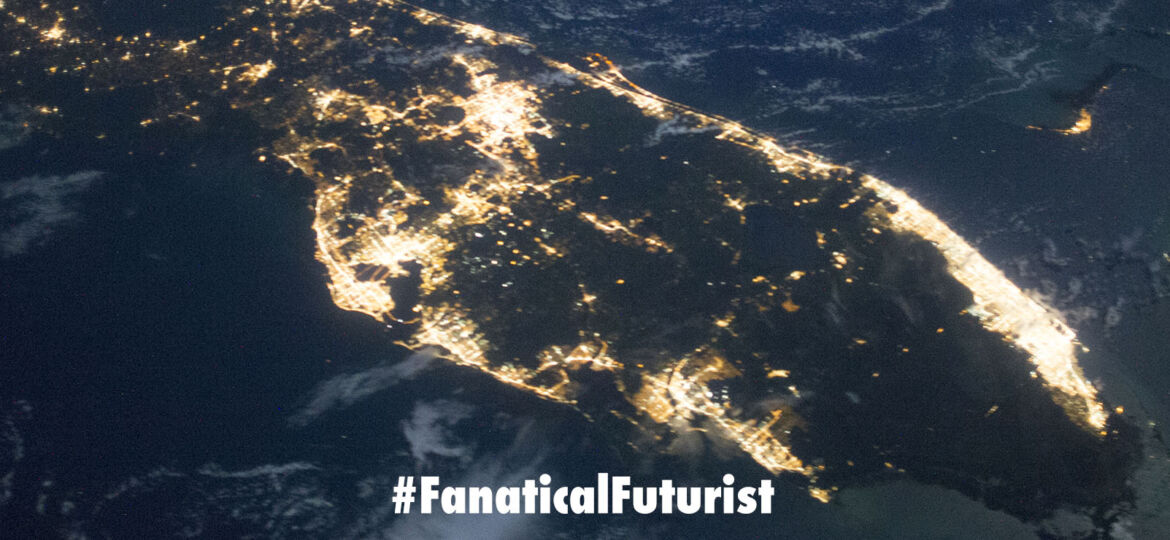
WHY THIS MATTERS IN BRIEF
In the past you would need a rocket to get into space, but today there are more planes taking on that role, and Cape Canaveral wants to dominate the future of commercial space flight.
As the race for space heats up, Cape Canaveral is eyeing the future – a future where space planes, not just rockets will access space, to build everything from autonomous robotic space factories and take space tourists around, as well as to and from one day, the Moon and Mars. Cape Canaveral Spaceport is made of more than launchpads. The famed space coast site also has a 15,000-foot runway, a veteran of more than 130 Space Shuttle landings. Those landings came to an end in 2011, though, but now, seven years later, that runway is open for commercial business. Just recently, Florida’s spaceport authority reported that the FAA issued a launch license for operations at the site.
The runway, for now still called the Shuttle Landing Facility (SLF), is a symbol of where spaceflight has been—now it’s becoming a key hub of the future. Since 2015 the runway, tower, and other pieces have been operated by Space Florida, the state’s spaceport development authority.
Space Florida has been working on this license since December 2015 and just submitted the more than 120 page application in February. On Thursday the FAA approved the paperwork, which allows the Cape Canaveral Spaceport to support operations of aircraft that carry air launched rockets.
There are numerous companies working on these systems, including Northup Grumman’s Pegasus, Vulcan Systems’ Stratolaunch, Virgin Orbit’s Launcher One, and Virgin Galactic’s Spaceship 2.
In a conversation SLF Airfield Manager James Mofitt said that Direct-to-Orbit spaceplanes – those that take off from a runway and cruise directly into suborbital space without using a carrier are covered by the license. The best known company offering this type of spacecraft was XCOR, which folded earlier this year, but the spaceport wants to be ready for future developments.
To get a license, a spaceport must have an idea of what kind of vehicles they will be hosting. The license must list the parameters of a prospective flight in the application, the details of which applicants make as broad and encompassing as possible.
“With every new potential launch vehicle from our facility, we have to evaluate to see if it fits within the parameters of how we achieved our license,” said Mofitt. “What we try to do and what a lot of organizations try to do is make sort of a worst case scenario on concept vehicles. We rarely ever use a specific vehicle because then our license would be tied to that specific flight profile. So we use concept vehicles.”
Space Florida officials acknowledged that the new license does not cover landings, but say that they are working on that. Landings are as important as takeoffs in terms of economic development. Launching experiments from Cape Canaveral is great, but landing them means companies are setting up labs and facilities in the nearby Space Florida owned industrial park.
One of the major concerns, and also one of the most time-consuming aspects of applying for a license, are environmental reviews. The list of considerations includes storage of rocket fuel, wastewater disposal, noise along flight routes, and the potential impact of a launch mishap or other accident. Space Florida says they and the FAA reviewed over 400 comments from agencies including NASA, the US Air Force, US Fish and Wildlife Service, and the National Park Service.
Adding various aircraft into the local airspace was one critical area of discussion.
“The key difference when this facility was used for the Shuttle was that it was a government program,” says Mofitt. “The government had full control of how they brought back an orbiter, and [authorities] could waive a lot of processes if they needed to. But for us commercial folks, the FAA and Office of Space Transportation spells out what we need to do.”
The spaceport had to obtain letters of agreement with local air-traffic authorities, nearby airport, and leadership at the Pentagon’s Eastern Range that say these parties will work together to smooth launch operations. Airlines were not directly solicited, says Space Florida VP Dale Ketcham, but could contribute through the airport’s input.
The license cost “a couple million dollars” but that amount includes work being done to credential a secondary site. Spaceports are often accused of a build-it-and-they-will-come strategy, but Mofitt points to the plethora of space launch companies that are coming online.
“Did we get this license on spec? Sure. But it’s safe to say this will pay off,” he says.
This license creates a major competitor in the spaceport world. There are numerous airports that are obtaining licenses to cohost rocket-launching airplanes, including several sites in Texas and one new one Colorado.
“One difference between us and a spaceport that is tied to or co-located at an airport is that we don’t have the mix of commercial or general aviation traffic,” Mofitt says. “We’re already segregated enough here.”
This is the second of three horizontal spaceports on Florida’s “Space Coast,” the other two being in Jacksonville and Titusville. Space Florida helps promote all three locations, but they cut a deal with NASA to operate the SLF, so they essentially helped establish potential competitors.
The battle for tenants will make or break these spaceports and having Cape Canaveral Spaceport throw its weight behind spaceplanes introduces a major player in a cluttered market. With its history, solid backing from the state of Florida, and now a license in hand, Space Florida will be a site to beat.
“We would like to think you can do it all here,” says Ketcham. “So why even talk to Virginia, Texas, New Mexico, California, or Alaska?”
















